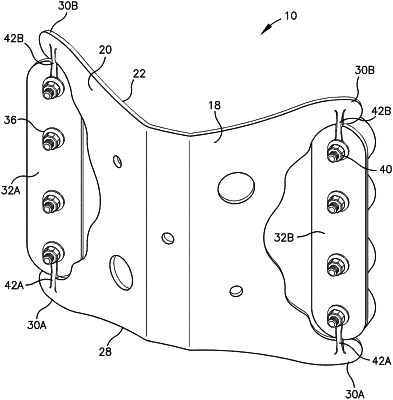| CPC F16B 5/0004 (2013.01) [F16L 3/00 (2013.01); F16B 1/00 (2013.01); F16B 5/0096 (2013.01); F16B 5/02 (2013.01); F16L 13/00 (2013.01)] | 31 Claims |

|
1. An apparatus for securing hardware to a surface of a structure, the apparatus comprising:
a main body, the main body further comprising a circumferential edge and at least one outwardly extending leg;
at least one distal pad with opposed first and second surfaces, the at least one distal pad attached to the at least one outwardly extending leg with longitudinally opposed first and second torsional joints, wherein each torsional joint comprises a longitudinally extending member with a first edge, a laterally opposed second edge, first and second longitudinally opposed ends and a longitudinally extending axis of rotation; and
at least one attachment device mounted to the first surface of the at least one distal pad, the at least one attachment device comprising a lower surface, wherein the opposed torsional joints are rotatable thereby allowing rotation of the attachment device to maximize surface contact with the structure.
|